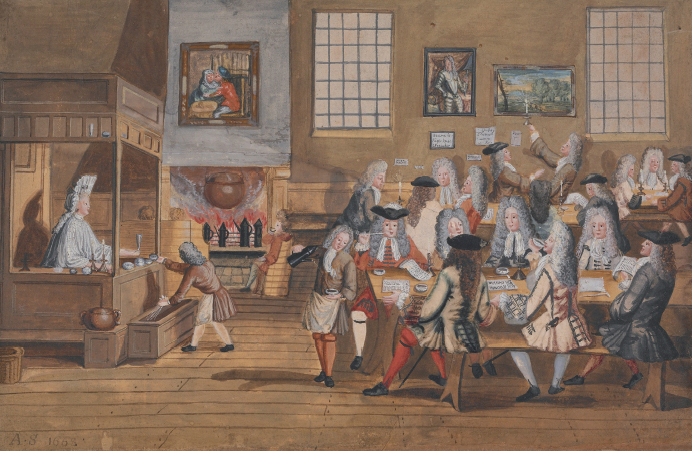Colonial Traders Join Global Networks
In the late seventeenth and early eighteenth centuries, trade became truly global. Not only did goods from China, India, the Middle East, Africa, and North America gain currency in England and the rest of Europe, but the tastes of European consumers also helped shape goods produced in other parts of the world. For instance, wealthy Englishmen had long desired fine porcelain from China, and by the early eighteenth century the Chinese were making teapots and bowls specifically for that market. The trade in cloth, tea, and sugar was similarly influenced by European tastes. The exploitation of African laborers contributed significantly to this global commerce. They were a crucial item of trade in their own right, and their labor in the Americas ensured steady supplies of sugar, rice, tobacco, indigo, and other goods for the world market.
By the early eighteenth century, both the volume and the diversity of goods multiplied. Silk, calico, porcelain, olive oil, wine, and other goods were carried from the East to Europe and the American colonies, while cod, mackerel, shingles, pine boards, barrel staves, rum, sugar, rice, and indigo filled ships returning west. A healthy trade also grew up within North America as New England fishermen, New York and Charleston merchants, and Caribbean planters met one another’s needs. Salted cod and mackerel flowed to the Caribbean, and rum, molasses, and slaves flowed back to the mainland. This commerce required ships, barrels, docks, warehouses, and wharves, all of which ensured a lively trade in lumber, tar, pitch, and rosin. The volume of trade originating in British North America was impressive. Between April and December 1720, for example, some 425 ships sailed in and out of Boston harbor alone (Map 3.2).

The flow of information was critical to the flow of goods and credit. By the early eighteenth century, coffeehouses flourished in port cities around the Atlantic, providing access to the latest news. Merchants, ship captains, and traders met in person to discuss new ventures and to keep apprised of recent developments. British and American periodicals reported on parliamentary legislation, commodity prices in India and Great Britain, the state of trading houses in China, the outbreak of disease in foreign ports, and stock ventures in London. Thus colonists from Boston to Charleston could follow the South Seas Bubble in 1720, when shares in the British South Seas Company rose to astronomical heights and then collapsed. William Moraley’s father was among the thousands of British investors who lost a great deal of money in this venture. But colonists could also track the rising price of wheat.
